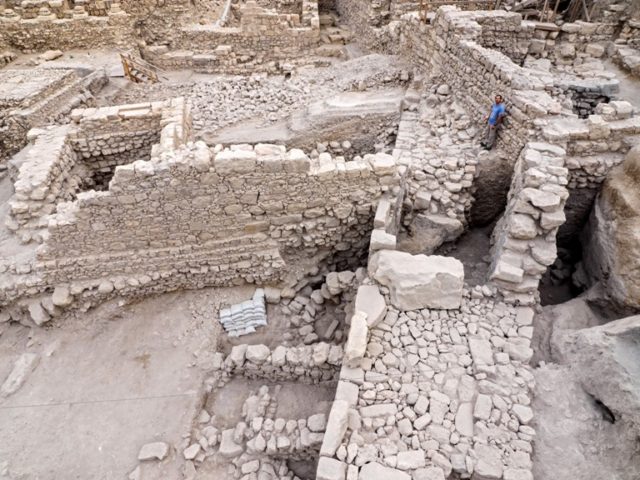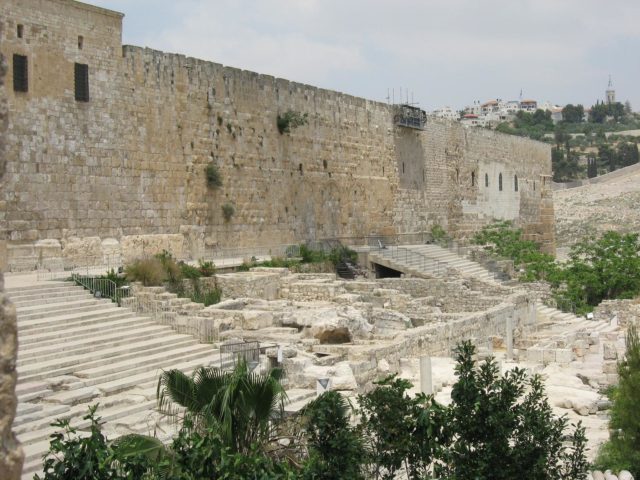Like Great Britain, the Middle East holds the many ancient secrets of the people who once roamed earth before us. So much history is lying beneath our feet waiting for experts and archaeologists to discover it.
Just last week, Israel’s antiquities body claimed that they had solved one of their greatest ancient mysteries. They believe that they finally found the ancient Greek citadel known as Acra among the ruins of the citadel beneath a parking lot.

Archaeologists have constantly wondered where the exact location of Acra lies. The citadel had been built by Seleucid Emperor Antiochus IV Epiphanes, who ruled from 215 to 164 BC. He had built this citadel in order to control Jerusalem and the Jewish temple in the city.
The temple had eventually been torn down by the Romans in 70 AD. The Romans then built two Muslim holy sites known as the Dome of the Rock and Al-Aqsa mosque in its place almost three centuries later. Due to this major change in ancient history, the site still witnesses disputes and cultural clashes. Today it is known to Muslims as The Noble Sanctuary, but Jews know it as Temple Mount. The area is sacred to both peoples, but, as stated above, the site is still known to cause clashes.

The Israel Antiquities Authority announced to the public that they believe they have found the remains of the citadel under the Givati parking lot at the City of David. There had been a reference to an archaeological site that was supposedly near the Palestinian neighborhood of Silwan. The spokespeople for the Antiquities Authority said that the Givati excavation is still continuing in order to uncover the various artifacts from over ten different cultures from Jerusalem’s history.
The citadel is actually mentioned in the Jewish Book of Maccabees and had been written about by the historian Flavius Josephus during the 1st century AD. However, it was never mentioned where the exact location was. The excavators on the site had uncovered a part of the citadel’s wall as well as a base of a tower. The spokesmen had stated that the base of the tower had rather large dimensions.
Archaeologists on the site had said that this was a fantastic discovery which allows them to reconstruct what the settlement used to look like. This would help both the public and experts to seejust how it looked more than 2,000 years ago.
Other artifacts found on the site had included lead sling shots, bronze arrowheads, and stone projectiles.
The citadel withstood many attempts of being conquered by others until the Jewish leader, Simon Maccabees, took it over in 141 BC after the Greek garrison had starved during the long siege.
In the Jewish tradition, Antiochus is thought to have been the villain of Hanukkah who believed Jewish religious rites should be banned. He eventually sparked the Maccabean revolt. Here is a little history about Antiochus.
Antiochus was born around 215 BC and died in 164 BC in Tabae, Iran. He was the king of the Hellenistic Syrian kingdom and reigned during the years of 175 to 164 BC. He had been best known for encouraging Greek culture, thus leading to suppressing Judaism which in turn eventually led to the Wars of the Maccabees.
Antiochus was the third son of Antiochus III the Great. After his father had been defeated by the Romans in 190 to 189, Antiochus served as a hostage in Rome from 189 to 175. From his time as a hostage, he learned to adore the Roman institutions and policies.
Antiochus eventually was returned to his home after his brother, King Seleucus IV, exchanged him for Demetrius, the son of Seleucus. Seleucus was eventually murdered by Heliodorus, a usurper, resulting in Antiochus taking the throne.
In this period, there was a lot of uncertainty in Syria. Eventually, the Egyptian ruler Ptolemy VI claimed Coele Syria, Palestine, and Phoenicia. All three of these cities had been originally claimed and conquered by Antiochus III.
Both the Syrian and Egyptian parties had called to Rome for help, but the Senate had refused to take sides. In 173, Antiochus eventually paid the remainder of the war indemnity that was imposed by the Romans on Antiochus III. The Treaty of Apamea was eventually written and signed in 188 BC.
